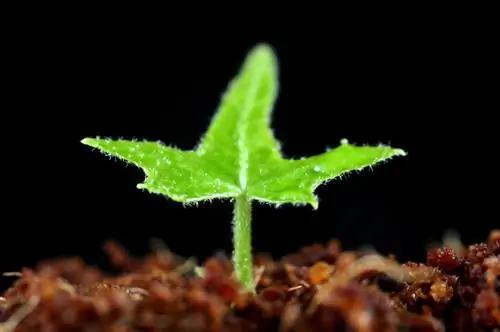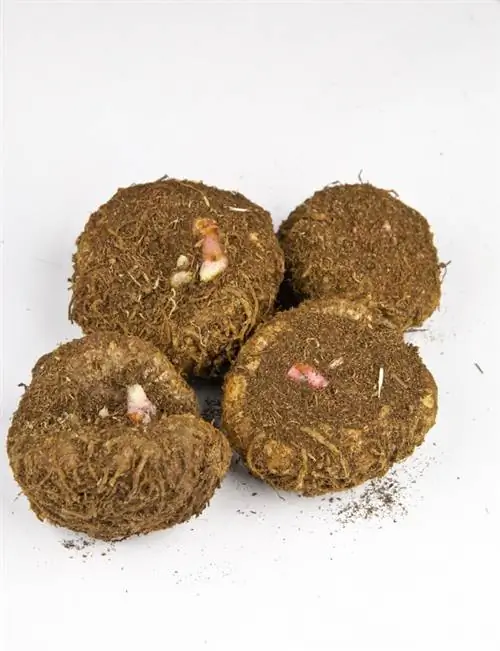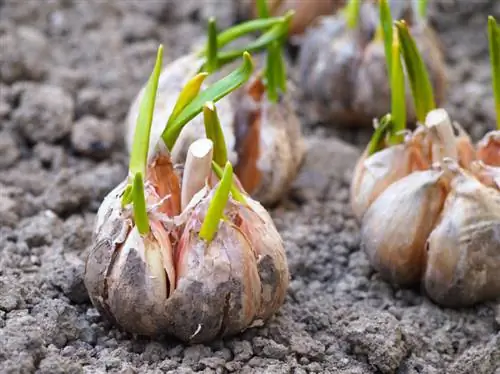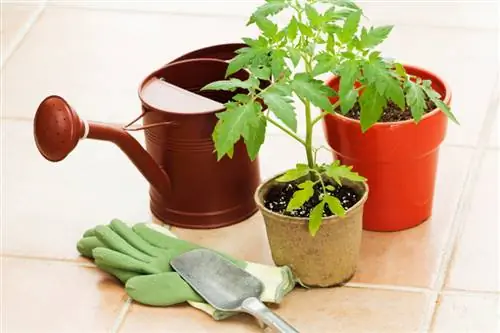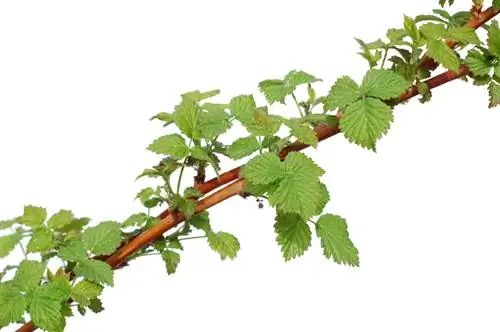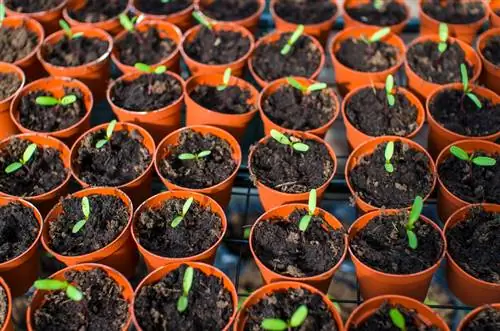- Author admin [email protected].
- Public 2023-12-16 16:46.
- Last modified 2025-01-23 11:20.
Hardly any plant is as easy to propagate as ivy. You can't do much wrong. There are several options for propagating ivy - all of them work even if you have little experience in propagating plants. How to grow new ivy cuttings.
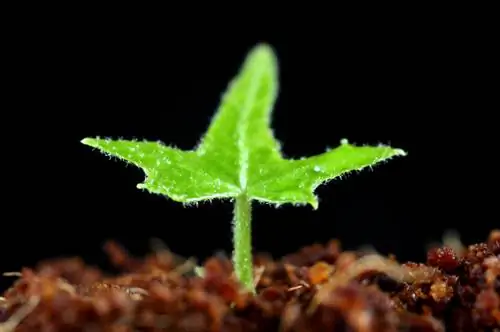
What is the best way to propagate ivy?
Ivy can be propagated by cuttings, sinkers or seeds. Cut 4- to 6-inch-long annual vines for cuttings, score shoots for suckers, or harvest seeds from ripe berries. For cuttings and sinkers, control moisture and seeds should be cool stratified.
Propagate ivy with these methods
- Cuttings
- Lowers
- Seeds
Growing ivy from cuttings
The best time for propagating ivy is from April to September. If you have an indoor greenhouse, you can even propagate ivy all year round. To take cuttings, cut annual tendrils that are 10 to 15 centimeters long. Remove the lower leaves; at least two, preferably four leaves must remain on the cutting. For very thin shoots, cut off the tip.
Prepare small pots with potting soil and insert the cuttings about three to four centimeters deep. The soil must be moist but not too wet. To maintain constant soil moisture, cover the shoots with freezer bags. Place the pots in a partially shaded place where the temperature is around 20 degrees.
If you want to continue growing the ivy hydroponically, place the cuttings in a glass that you have filled with soft water. After a while, roots will also form there. Place the jar in a warm spot in partial shade until sufficient roots have formed. Then place them in a hydroponic container.
Care for cuttings
As soon as the first new shoots appear, remove the plastic cover and water the plants regularly with lukewarm water. You are not allowed to fertilize the cuttings!
Do not plant the offshoots grown in this way in the garden until the pot ball is well rooted. In the first year, the new ivy plants still need light winter protection.
Propagate ivy by lowering it
If you have little space in the house, choose the lowering method to propagate ivy. To do this you need tendrils that you can either pull down to the ground or that grow on the ground anyway.
Scratch a selected shoot lightly. It shouldn't be too woody. Dig a small hole about two to three centimeters deep and place the scratched area there. Cover the sinker with soil. Weigh down the area with a stone or tent pegs so that the shoot stays in the ground.
It usually only takes a few weeks for the sinkers to form roots. You can tell whether propagation by lowering has worked because you cannot pull the shoot out of the ground without resistance.
Planting out cuttings
Before you separate the offshoots from the mother plant, wait a little longer. A few new leaves should have already formed.
Now you can separate the young plant from the mother plant with scissors or a knife and plant it in a prepared place in the garden.
Here, too, it is advisable to protect the plants from frost in the first winter.
Growing ivy from seeds
Growing ivy from seed is possible if you have an older plant that flowers and produces the black fruits. To harvest seeds, you must not cut the dried flowers but leave them on the plant. Only then will seeds form that you can pick the following year. Be sure to wear gloves when picking, as the berries are highly poisonous!
Ivy is a cold germinator, which means you need to stratify the seeds. To do this, put them in a freezer bag with a little sand and put them in the vegetable compartment of the refrigerator for several weeks. Check occasionally to prevent the seed from drying out.
Prepare small pots or growing trays with normal garden soil. Do not sow the seeds too densely. After pressing lightly, cover them with a very thin layer of soil. Spray the pots with a floral sprayer.
Caring for ivy seeds
Place the pots in a bright place at around 22 degrees. It usually only takes a few days for the cotyledons to appear. Now put the seedlings a little cooler.
As soon as two to three new leaves have formed, prick the plants. Leave only the strongest specimens.
By regularly cutting off the tips, the offshoots become beautifully bushy and compact. As soon as the shoots have reached a length of 20 to 25 centimeters, you can plant them in the garden. In the first year you should protect the young plants from frost, later this is no longer necessary.
Tip
If you sow the freshly picked seeds straight away, propagation often works without prior cold treatment. It is important that the seeds in the berries do not dry out under any circumstances.

